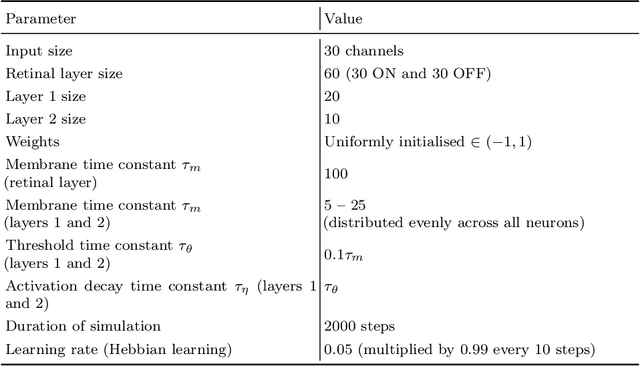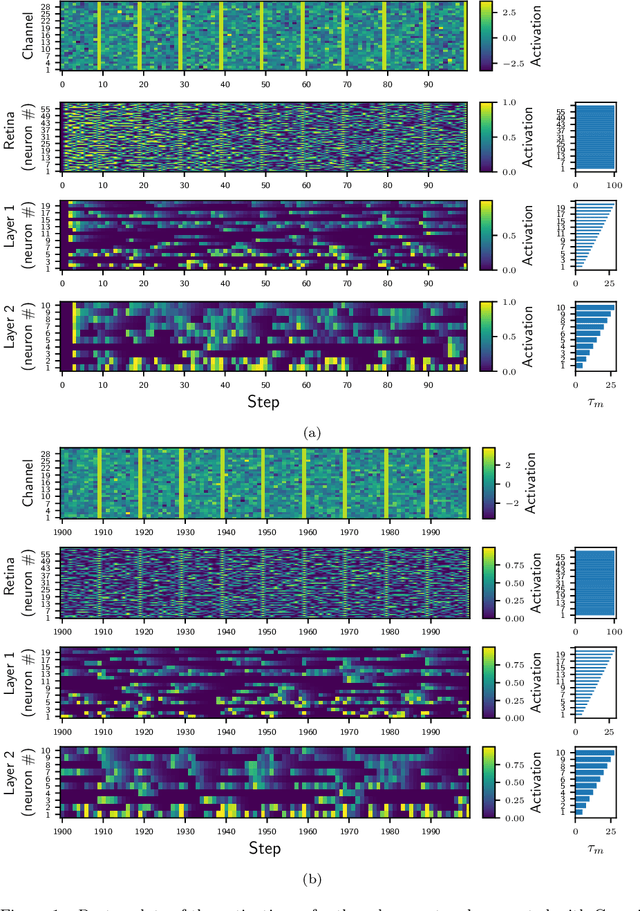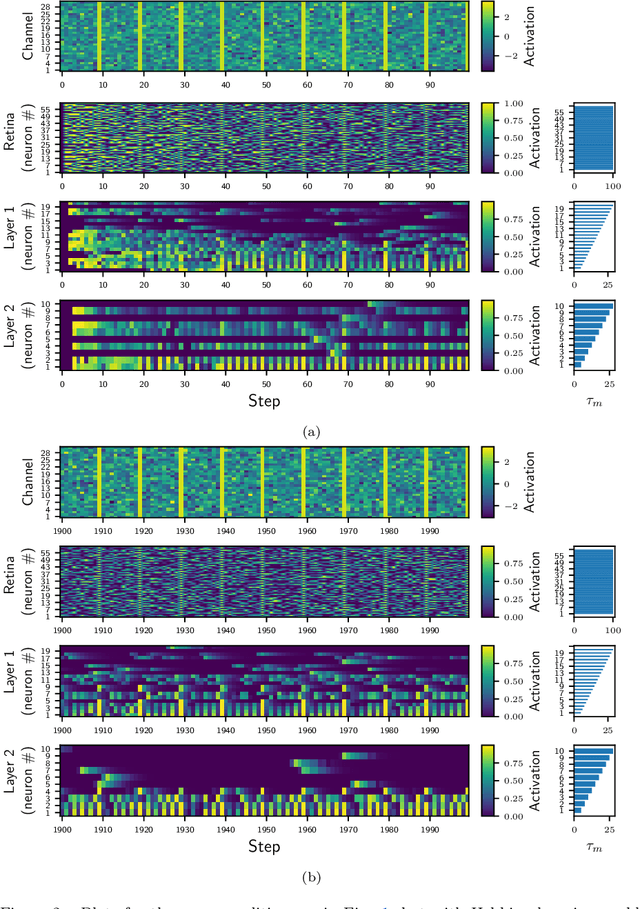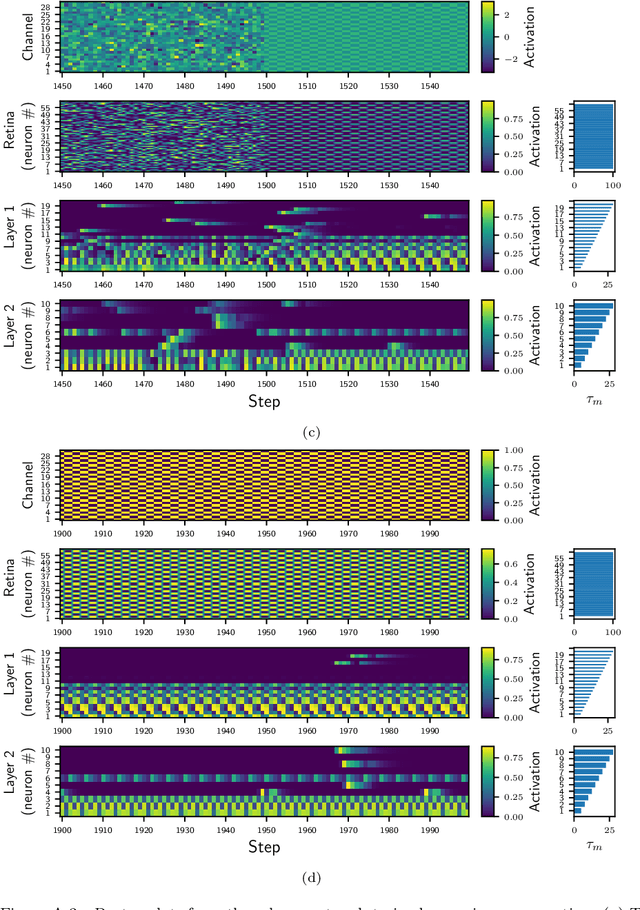Continuous Learning and Adaptation with Membrane Potential and Activation Threshold Homeostasis
Paper and Code
May 08, 2021



Most classical (non-spiking) neural network models disregard internal neuron dynamics and treat neurons as simple input integrators. However, biological neurons have an internal state governed by complex dynamics that plays a crucial role in learning, adaptation and the overall network activity and behaviour. This paper presents the Membrane Potential and Activation Threshold Homeostasis (MPATH) neuron model, which combines several biologically inspired mechanisms to efficiently simulate internal neuron dynamics with a single parameter analogous to the membrane time constant in biological neurons. The model allows neurons to maintain a form of dynamic equilibrium by automatically regulating their activity when presented with fluctuating input. One consequence of the MPATH model is that it imbues neurons with a sense of time without recurrent connections, paving the way for modelling processes that depend on temporal aspects of neuron activity. Experiments demonstrate the model's ability to adapt to and continually learn from its input.
 Add to Chrome
Add to Chrome Add to Firefox
Add to Firefox Add to Edge
Add to Edge